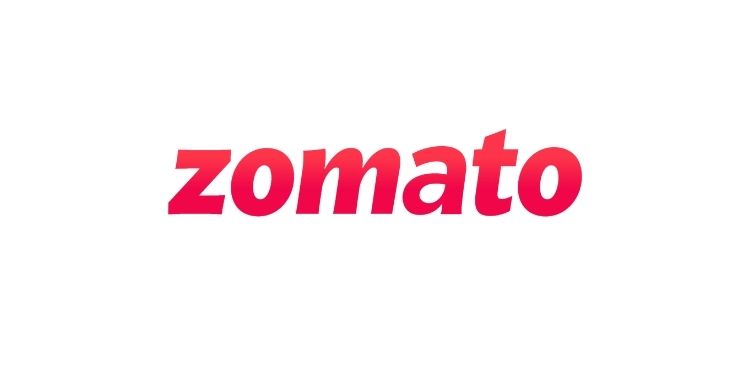Food delivery app Zomato founder Deepinder Goyal has announced the launch of a 10 minutes delivery plan- ‘Zomato instant’ two days back. Under the new service, Zomato claims to deliver food in just 10 minutes, soon after the announcement the food delivery company faced massive backlash and trolls on social media. Following this, Goyal took to Twitter to elaborate how 10-minute delivery works, and how it is as safe for their delivery partners. He clarified that 10 minutes delivery will be for specific nearby locations, popular and standardized menu items only.
One of the popular questions that were raised by netizens was, do we need 10-minute delivery plans?

“No. We don’t. It is really that simple for me. We don’t need 10-minute food delivery and we don’t need 19-minute grocery delivery,” says Ambarish Ray, Co-founder and CEO, Digital Dogs Content and Media.
“This is a very American concept. Groceries are usually located very far from urban settlements and cities whereas fast food restaurants are located close. The American culinary culture is also more salads that need a freshly sourced vegetable to go into a bowl of greens. Our food doesn’t need 10-minute delivery and our roads cannot support it either. We are experimenting on a large social laboratory here and we don’t know what will happen yet,” Ray added.

For Misbah Quadri, Founder & CEO, Monofys Media the 10-minute food delivery by Zomato Instant is a great trial of inventiveness.
“The 10 minutes grocery delivery service is already available in India, but this is the first time that a company is claiming to deliver food in 10 minutes. Swiggy Instamart and Zepto are among the most popular quick grocery delivery platforms in the country. To address your question, I will quote Goyal himself “Innovating and leading from the front is the only way to survive (and therefore thrive) in the tech industry,” she said.
Speaking about the pros and cons of Zomato instant, Nishit Nanda – CEO, youlry.com said, “The positive is very clear – from consumers getting what they want almost as soon as they order it to certain food items like French fries and tea/coffee almost being freshly served as they get made, it is great for the foodie with the smartphone. From the business standpoint, it is also all good because this will be a premium service and it will also be packaged as a premium product for the restaurant partners – since their inventory will be better managed and stock and raw materials can be more efficiently planned.”
The cons of the plan, according to Nanda, is social cost (of human life and road safety issues) as well as the untethered nature of the need for 10-minute deliveries.
“The biggest concern that I see as a reputation management professional is that of the brand image. Post pandemic, audiences globally are shifting towards a more socially and environmentally conscious approach over a reckless and disinterested attitude. Consumers want to lend brand loyalty to companies that are honestly doing the legwork of giving back to society and putting people first,” said Misbah.
“The current positioning by Zomato comes across as being insensitive, crude and devoid of compassion. The moment the 10-minute delivery news went public, consumers were too quick to react with concern for the delivery executives’ safety while driving. Some even went on to point out that we would rather have 10-minute ambulances and fire brigades than 10-minute food delivery. Although I do think that all of the uproars are only helping the brand build further hype around the subject, and it is a genuinely feasible idea – whether they succumb to public pressure and are even able to deliver on their promises is a secondary matter altogether,” she added.
According to Ray, the 10-minute plan is super clever. It marries an advantage that Zomato has (after completing its purchase and acquisition of Blinkit) in quick sourcing and fulfilment with the social trend of super fast deliveries. The costs are deployed into a new revenue engine, the benefit will try to scale with new markets and new orders. All positives from a supply-side story.
“From a demand-side story, the consumer is going to be even more super spoiled. Food comes to your doorstep almost as soon as you order it. The negatives are not apparent yet. They will be though. Road rage, casualties, irrational expectations, high dissatisfaction scores, there are more. But I am not here to spread doom and depression. If the consumer wants it and keeps wanting it, there must be a way to make it happen and sustain it,” he added.
Technology and the power to make the hitherto unthought of, very real is the driving force for VCs and founders alike.
Is it a practical act?
“It is quite practical and simple. Data science is a very powerful tool that is assisting brands to innovate, reinvent and strategize for customized and competitive performance delivery. Zomato is only capitalizing on the data set from the restaurants and areas it caters to. The data sourced from the past orders of Zomato users allows the application to forecast pretty accurately what will get sold in the foreseeable future, where and when. Goyal has also categorically pointed out that this option will only apply to certain “fast food” and not on all items. Moreover, BlinkIt (formerly Grofers) is now owned by Zomato. So, if they have the technological expertise and back end tools in place as they claim to, then all that remains to be done is capitalizing on the pool of logistics which already exists and deliver food within 10 minutes,” said Misbah.
According to Nanda, “This is the age of the impossible being made possible because of technology.
“Everything that is becoming possible may not always be practical. However, the view on what is practical is nuanced. Is it practical for the consumer? Yes, it is as no one likes to wait for long after ordering their food – whether it is sitting at the restaurant table or waiting for the doorbell to ring at home. Is it practical for the armies of delivery partners who will now be rushing extra fast to fulfil their company’s commitment to 10 minutes? No, it is not. Not till the technology (of dark kitchens, deep analytics and demand-side pre—preps) meets the larger infrastructure (of better, wider roads and traffic management). The jury is still out on this one,” he added.
The consumer enjoys the ride in the beginning, like a roller coaster. But soon, this numbers game stops making sense incrementally to the consumer, who is now especially expected to pay a premium for a delivery reaching them seconds before another app. It will be good to see what ‘fast’ translates into as a consumer benefit up the value ladder eventually.
“Quick commerce is a great magnet for VC money and investor interest. So are concepts like dark from warehouses to kitchens. The majority of funding money is channelled into speed, need and deed. Can I make it faster? Is there a need or can I create one? And deed – what action am I simplifying, eliminating or making more entertaining when it comes to the consumer? These areas are super sticky when it comes to catching VCs. Let’s see if new ones get added,” Ray concluded.

















